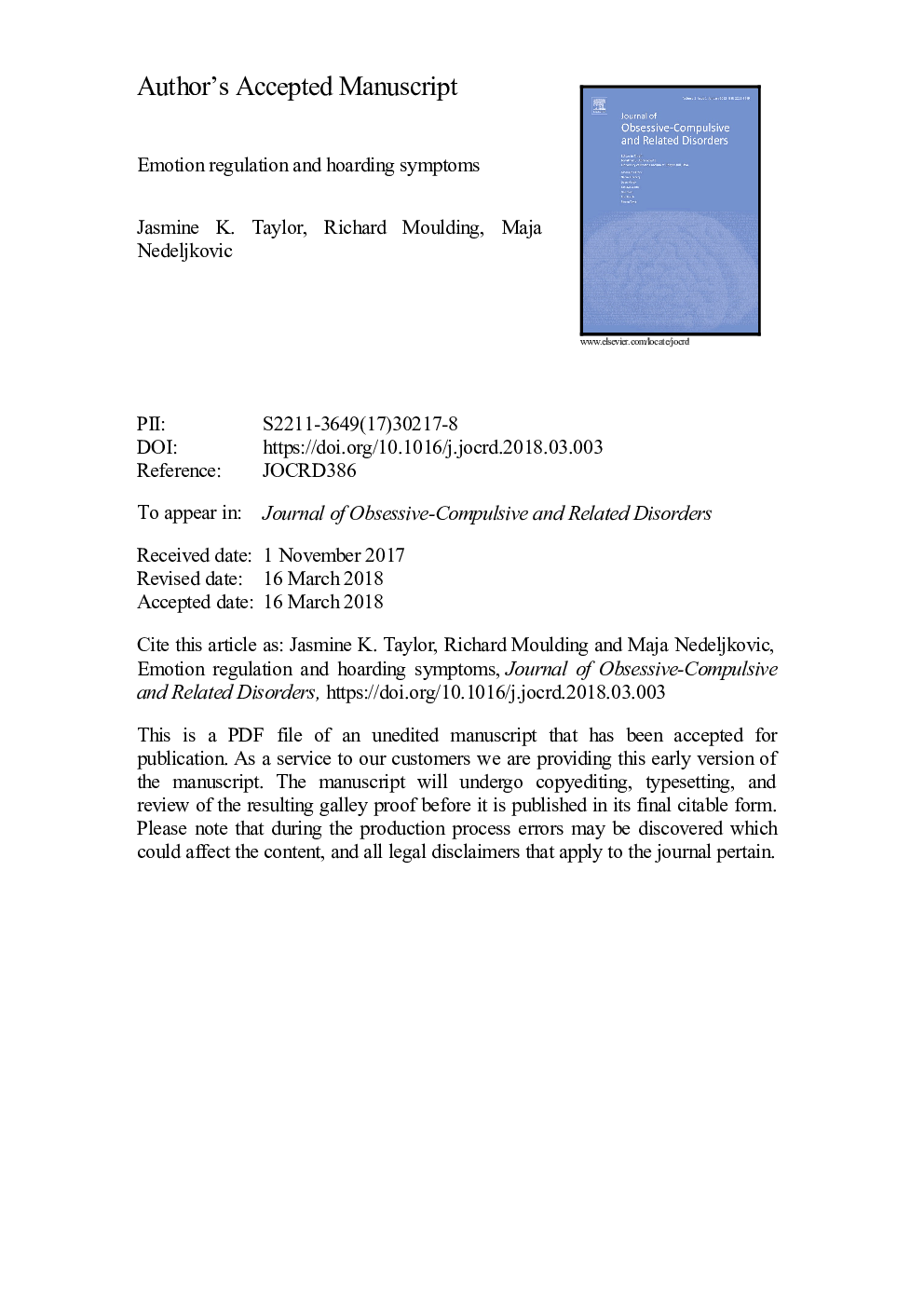| Article ID | Journal | Published Year | Pages | File Type |
|---|---|---|---|---|
| 7268978 | Journal of Obsessive-Compulsive and Related Disorders | 2018 | 46 Pages |
Abstract
Hoarding disorder is a disabling condition associated with significant health risks, and social, occupational, and economic impairment. While the cognitive-behavioral model of compulsive hoarding has been successful in explaining the phenomenology of hoarding, recent research has suggested emotion regulation (ER) might play an important role in driving hoarding symptoms. To investigate this notion, two non-clinical questionnaire studies were conducted. In Study 1 (Nâ¯=â¯199; M ageâ¯=â¯28.43; SDâ¯=â¯11.42), it was found that ER difficulties and impulsivity were significantly associated with hoarding symptoms and beliefs, and significantly predicted difficulty discarding, acquisition, and total hoarding symptoms, even after controlling for relevant covariates (i.e., general depressive and non-hoarding obsessive-compulsive symptoms). The ER-hoarding relationship was partially mediated by beliefs regarding emotional attachment to possessions. Study 2 largely replicated the findings of Study 1 in an independent non-clinical study (Nâ¯=â¯178; M ageâ¯=â¯25.06; SDâ¯=â¯10.05). In addition to generally replicating the earlier findings, it was additionally found that while the use of cognitive reappraisal and expressive suppression strategies were not significantly associated with hoarding symptoms, experiential avoidance and alexithymia were both significantly associated with hoarding symptoms and beliefs, and significantly predicted hoarding symptoms after controlling for covariates. Implications are discussed.
Related Topics
Health Sciences
Medicine and Dentistry
Psychiatry and Mental Health
Authors
Jasmine K. Taylor, Richard Moulding, Maja Nedeljkovic,
